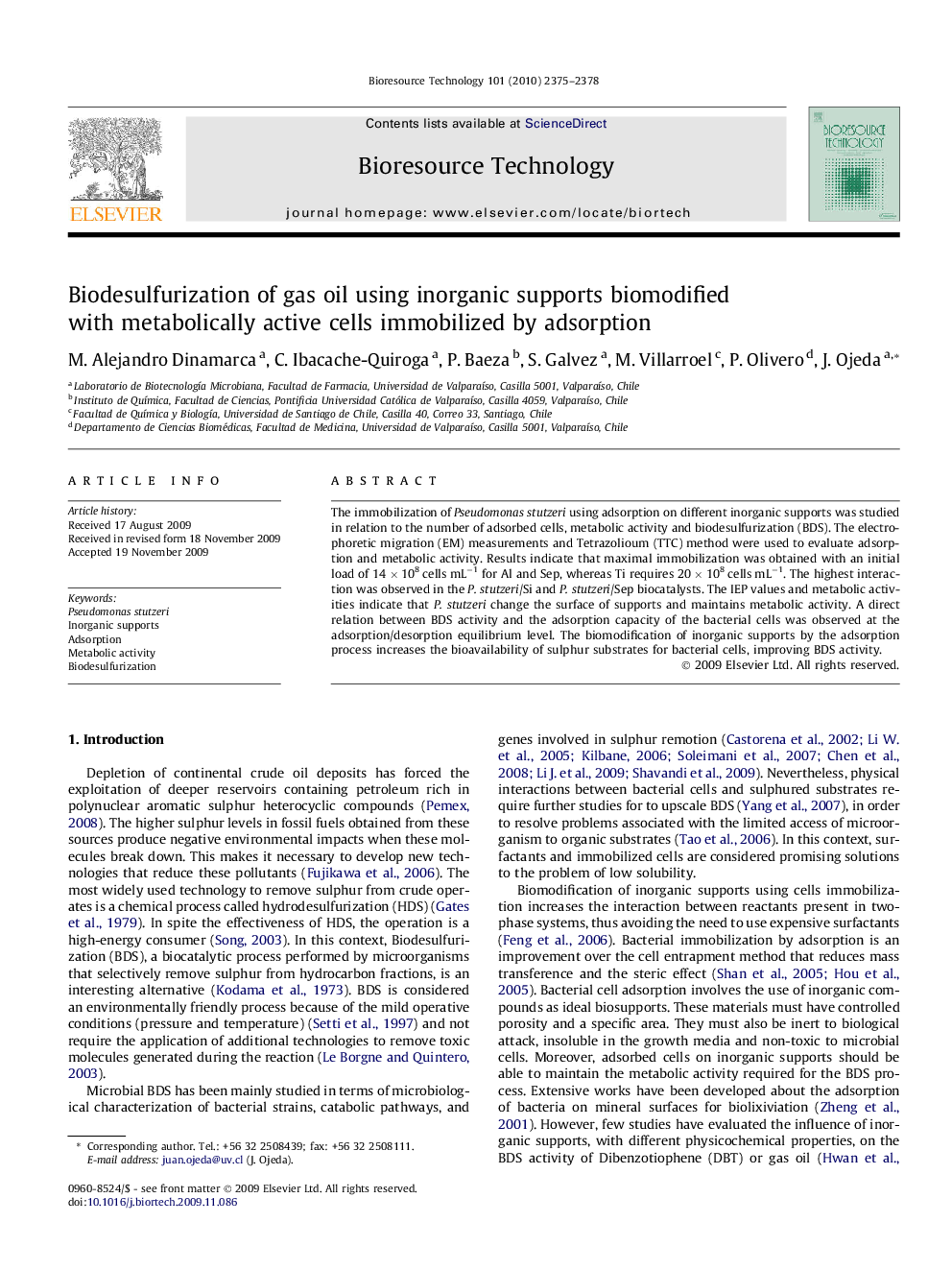| Article ID | Journal | Published Year | Pages | File Type |
|---|---|---|---|---|
| 683869 | Bioresource Technology | 2010 | 4 Pages |
The immobilization of Pseudomonas stutzeri using adsorption on different inorganic supports was studied in relation to the number of adsorbed cells, metabolic activity and biodesulfurization (BDS). The electrophoretic migration (EM) measurements and Tetrazolioum (TTC) method were used to evaluate adsorption and metabolic activity. Results indicate that maximal immobilization was obtained with an initial load of 14 × 108 cells mL−1 for Al and Sep, whereas Ti requires 20 × 108 cells mL−1. The highest interaction was observed in the P. stutzeri/Si and P. stutzeri/Sep biocatalysts. The IEP values and metabolic activities indicate that P. stutzeri change the surface of supports and maintains metabolic activity. A direct relation between BDS activity and the adsorption capacity of the bacterial cells was observed at the adsorption/desorption equilibrium level. The biomodification of inorganic supports by the adsorption process increases the bioavailability of sulphur substrates for bacterial cells, improving BDS activity.
